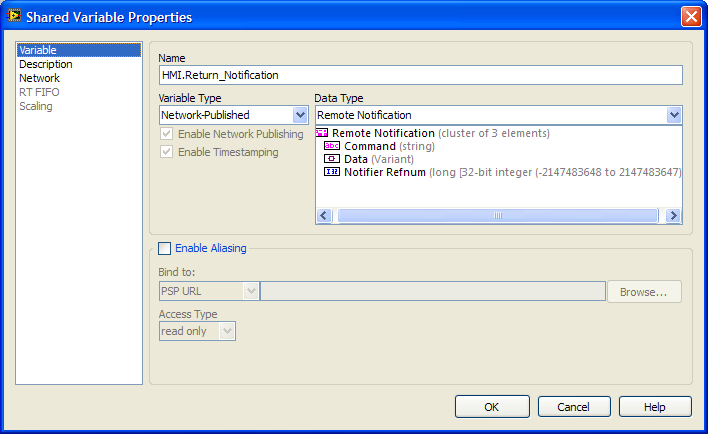-
Posts
471 -
Joined
-
Last visited
-
Days Won
20
Content Type
Profiles
Forums
Downloads
Gallery
Everything posted by viSci
-
Well basically I still sell those exhibits now and then to other museums. If you are interested in Biological signal analysis you should check out NI's free Biomedical Startup kit...
-
Here is a jing clip of the Heartbeat Exhibit. http://screencast.com/t/owijhiujxEi
-
That's interesting! I designed that exhibit about 6 years ago along with a LabVIEW controlled Laser Harp which used to also be at that museum.
-
Maybe you can hack into this bad boy and make it work for your purposes. http://www.kshif.com/lv/ps150_85.zip
-
How about something like this... http://www.robotshop.com/devantec-usb-i2c-spi-serial-interface.html?utm_source=google&utm_medium=base&utm_campaign=jos
-
.thumb.jpg.5d2ee2fea691c9fe3fab4270ba8e531d.jpg)
Observations: Microsoft's Visual Programming Language compared to Labview
viSci replied to Daklu's topic in LabVIEW General
Very interesting and nice to get out of our LabVIEW microcosm for a change. Looking forward to your followup posts...- 16 replies
-
If you do not need more than 100,000 S/s and you own DSC, then you could stream to NI's very own real-time historical DB. Too bad NI does not take Citadel out the DSC closet and make it available for general use.
-
.thumb.jpg.5d2ee2fea691c9fe3fab4270ba8e531d.jpg)
Anybody out there know the status of LuaVIEW?
viSci replied to Mark Smith's topic in LabVIEW General
Just like to chime in here to give my support to any future LuaVIEW development. I have used the toolkit several times in the past 5 years and had very good results. One thing that I would like to suggest is to make it easier to purchase the toolkit. I know that CIT has been very generous in making the toolkit and LV source code available for everyone, with payment based on an honor system. At my previous employer, which was a large biomedical company and my current employer, NASA, I requested and received approval to purchase the toolkit. In both cases, the funds were allocated but it went into a purchasing black hole because the funds needed to be converted to a foreign currency and there was no way to use a credit card to complete the purchase. Perhaps also, a middle tier version of LuaVIEW could be offered in the $100-$200 range. A lot of work went into the LuaVIEW toolkit that justifies the original cost ($1000?) but I think CIT is missing the sweet spot that would open it up to more applications and get the buzz out. -
Ok, I looked at some of my code and it seems that I did use the DSC BV Tag URL to register my network shared variable events. So you maybe correct that you cannot directly feed in a LV SV URL. But functionally, the BV tag URL can point to any conventional SV type. Also noticed that if I use a LV SV URL and convert it to a string then it seems to work also...
-
Network Shared Variables do work with DSC Value Changed Events. Your code snippet shows only single process SV's maybe that is the problem.
-
Maybe this might give you some ideas... http://forums.ni.com...time/m-p/392827 Also heard that cRIO CAN automatically synchronizes its timestamp with the cRIO VxWorks system Timestamp. So I guess there should be no reason why it could not be done for Pharlap based RT. "Moreover, on a CompactRIO system, the module’s timebase is corrected for drift with respect to the RT controller’s timebase, allowing the capability to correlate data with other modules in the chassis." - page 3-19 of the NI-XNET Hardware Overview Manual
-
Surprisingly, if you add a control like a boolean to the cluster then it becomes executable. I tried loading a reentrant vi into the subpanel(s), it runs but not as individual clones.
- 6 replies
-
- xcontrol
- cluster array
-
(and 1 more)
Tagged with:
-
Actually in LV2011 you can put a subpanel in a cluster and then into an array. I am not sure if you can do anything useful with it but LV does let you do it.
- 6 replies
-
- xcontrol
- cluster array
-
(and 1 more)
Tagged with:
-
Did you try to enable the Auto Adjust Scales option in the right click advanced menu?
-
Maybe related to this... http://forums.ni.com/t5/LabVIEW/Graph-Y-axis-creep/m-p/1691228#M600127
-
Could you compile your LV code to a DLL?
-
How about this... https://github.com/mnaberez/tdms Wow, this just goes on and on... http://pytdms.sourceforge.net/
-
Also don't forget the TDMS Excel Plugin. and this... http://originlab.com/index.aspx?go=Products/Origin/ImportingData/ThirdPartyFormats&pid=1047
-
I use static vi references for this purpose and put them in an unused state machine case. Of course this only works if you have a fixed library of vi's that you will need to call dynamically.
- 14 replies
-
- dynamic launching
- real time
-
(and 1 more)
Tagged with:
-
TDMS Rocks! I find it to be very fast for writes and reads. So fast that I now use it as a core data store for my DAQ applications that need to be able to acquire data and simultaneously read out and display the data. You can easily emulate the kind of real time historical data viewer that you get in the distributed system manager using this capability of TDMS.
-
Ok, the light is starting to brighten, it is basically like linked lists. Hard to believe, but in all these years I have never setup a database, I always used ordinary files or TDMS. Thanks for the pointers!
-
I have a TDMS file structure that holds calibration tables each with associated DUT header information (SN, Model Number, Manufacturer, etc) assigned as Group Properties. In SQLite it seems that I must lay everything out as a flat table, first columns being the DUT header variables and then the last column being a blob or xml string representing my cal table data. I was wondering if I am overlooking some better way of organizing the data...
-
.thumb.jpg.5d2ee2fea691c9fe3fab4270ba8e531d.jpg)
DSC Toolkit, does anyone use it?
viSci replied to Jordan Kuehn's topic in Remote Control, Monitoring and the Internet
I use it primarily for Citadel and NSV events and it has worked well. The Distributed System Manager interfaces with Citadel and provides powerful historical charting capability. For those 2 features I am not sure that it is worth the money but in my case the customer had no problem paying for it. I think it is theoretically possible to create NSV events without the DSC but I have not been able to crack that nut yet. -
Here is another option for simple logging capability - http://sine.ni.com/nips/cds/view/p/lang/en/nid/209116
-
Yes, you can use the GetPlotAtPos Method and use the Mouse Move event (and use the Coords event data) for the pane that contains the graph and you will get a Plot Number output for the plot trace that is closest to the mouse cursor.





